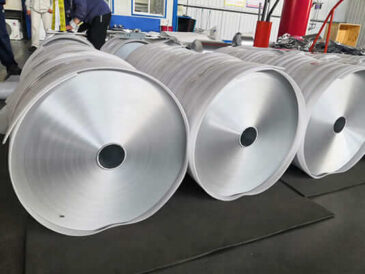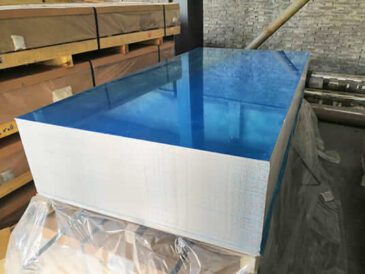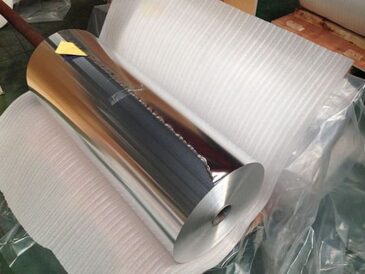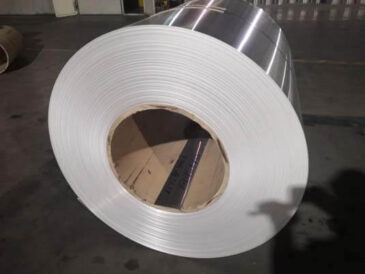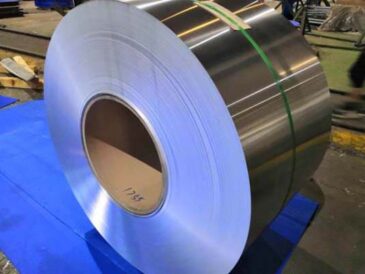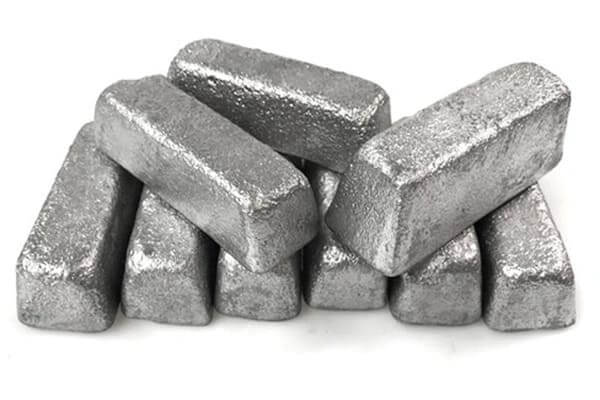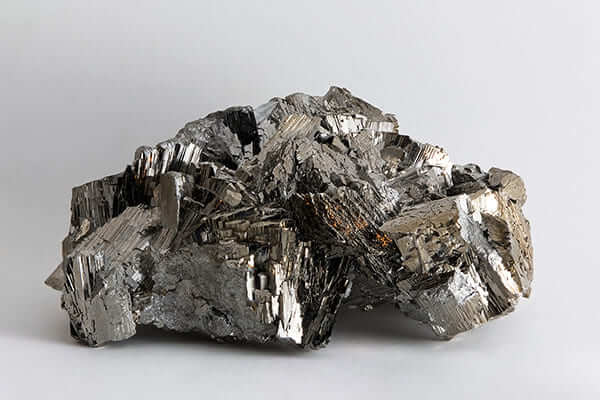Introduction Of 5052 Aluminum Sheet Plate
5052 aluminum sheet plate is an AL-Mg alloy plate, which has strong corrosion resistance, weldability and cold workability. It cannot be strengthened by heat treatment, and it is also the alloy with the highest strength among non-heat treatable alloys. Therefore, its application range is very wide, and it is often used in: Aviation Aerospace, transportation, shipbuilding, chemical containers and other fields.

5052 aluminum sheet plate for sale
5052 aluminum alloy is a medium-hardness alloy that can be brushed or anodized for better results and is used in notebook casings or other electronic products.
Aluminum Plate vs. Aluminum Sheet
Aluminum sheet and aluminum plate are essentially the same; the only true distinction is in their respective thickness. Aluminum sheet is any aluminum sheet metal thicker than foil but thinner than 6mm; it comes in many forms including diamond plate, expanded, perforated, and painted aluminum sheet. Aluminum plate is any aluminum sheet metal that is thicker than 6mm.
Aluminum 5052 Sheet and Plate Characteristics
- Non-heat treatable
- High strength/high fatigue strength
- Weldable and cold workable
- Corrosion resistant, especially for marine or saltwater applications
- Low density (5052 density is 2.68)
- 5052 can be hardened by work hardening (5052-H32)
- Among non-heat treatable alloys, 5052 is considered one of the strongest choices.
- 5052 aluminum sheet plate is also highly resistant to corrosion and offers very good formability and durability
- 5052 does not contain copper, which makes it less susceptible to salt water corrosion than copper alloys.
- The 5052 aluminum plate has good anodic oxidation performance, and the surface will not appear color difference after oxidation, and the texture is consistent.
- 5052 is one of the easiest aluminum alloys to weld and can be easily welded using a variety of techniques, it has the best welding characteristics of all aluminum alloys.

Anodized 5052 aluminum sheet plate
5052 Aluminum Alloy Chemical Composition (Single values are maxima except as noted)
| Alloy | Si | Fe | Cu | Mn | Mg | Cr | Zn | Ti | Others |
| 5052 | 0.25 | 0.40 | 0.10 | 0.10 | 2.2-2.8 | 0.15-0.35 | 0.10 | – | 0.15 |
Standard
National Standard for Aluminum Plate and Strip (GB/T 3880-2006), a unified standard applicable to aluminum alloy plate and strip materials.
- • ASTM B209M – 10. Standard Specification for Aluminium and Aluminium-Alloy Sheet and Plate.
- • ASTM B928M – 09. Standard Specification for High Magnesium Aluminium-Alloy Sheet Service and Similar Environments.
- • Aluminium Association – Aluminium Standards and Data – 2009 Metric SI.
- • WTIA Technical Note 2 – Successful Welding of Aluminium.
- • Atlas Tech Note No. 14 – Aluminium Alloys 5052 and 5251 – Quite Similar but Completely Different.
Mechanical Property Specification
| Alloy & Temper |
Tensile Strength (Mpa) |
Yield Strength 0.2% Proof (Mpa) min. |
Elongation (% in 50mm) Minimum for sheet or plate thicknesses shown |
||||
| 0.15- 0.32mm |
0.33- 0.63mm |
0.64- 1.20mm |
1.21- 6.30mm |
6.31- 80.0mm |
|||
| 5052-O | 170 – 215 | 65 | 13 | 15 | 17 | 19 | 18 |
| 5052-H32 | 215 – 265 | 160 | – | 4 | 5 | 7 | 11 |
| 5052-H34 | 235 – 285 | 180 | 3 | 3 | 4 | 6 | 10 |
| 5052-H36 | 255 – 305 | 200 | 2 | 3 | 4 | 4 * | – |
| 5052-H38 | 270 min. | 220 | 2 | 3 | 4 | 4 * | – |
| • Tempers H22 and H24 etc. may not meet maximum tensile strength and minimum yield strength limits, but if supplied in place of ordered H32 or H34 all limits must be complied with. • * Properties for H36 only specified up to 4.0mm, and for H38 up to 3.2mm thick. • Specialist tempers such as F, H116, H112 and H141 are also possible in 5052 – refer to standards for details. |
|||||||
Mechanical Property Specification
- Density: 2.68 g/cm3
- Melting Point: 605 °C
- Thermal Expansion: 23.7 x10-6 /K
- Modulus of Elasticity: 70 GPa
- Thermal Conductivity: 138 W/m.K
- Electrical Resistivity: 0.0495 x10-6 Ω.m
Altername of 5052 aluminum
| Alloy | UNS No |
ISO | BS | DIN | |
| No | Name | ||||
| 5052 | A95052 | AlMg2.5 | L80, L81 | 3.3523 | AlMg2.5 |
| These comparisons are approximate only. The list is intended as a comparison of functionally similar materials not as a schedule of contractual equivalents. If exact equivalents are needed original specifications must be consulted. | |||||
Possible Alternative Alloys
| Alloy | Why it might be chosen to instead of 5052 aluminum alloy |
| 3003 | Brighter appearance required, particularly when considering treadplate. |
| 5005 | Bright (decorative) anodising finish is required. |
| 5083 | Higher strength or improved corrosion resistance required, particularly for ship hull applications. |
Applications of 5052 Aluminum Sheet Plate
5052 Aluminum Sheet Applications
Aluminum sheet 5052 is used in many types of industrial applications, including:
- Refrigerator liners
- Fuel tanks
- Storm shutters
- Panels
- Road signs
- Marine applications
- Medical equipment
5052 Aluminum Plate Applications
Aluminum plate 5052 is used in many types of industrial applications, including:
- Marine hardware
- Boat hulls
- Tanks
- Drums
- And more
Detailed description of 5052 aluminum sheet plate application
1. Aerospace: 5052 aluminum sheet plate is a light-weight and high-strength alloy material with excellent mechanical properties and corrosion resistance, so it is widely used in the aerospace field. For example, aircraft shells, fuel tanks, structural parts, etc. can be made of 5052 aluminum plates. In addition, 5052 aluminum plates are also widely used in the field of aerospace engines and can be used to manufacture turbine blades, combustion chambers, etc.

5052 aluminum plates for aerospace
2. Automobile manufacturing: With the continuous development of the automobile industry, lightweighting is a trend. 5052 aluminum plate has the characteristics of light weight and high strength, and has become an important material in lightweight automobile manufacturing. For example, car body, chassis, doors and other components can be made of 5052 aluminum plates. In addition, 5052 aluminum sheet plates are also widely used in automotive engines, transmissions and other components.
3. Shipbuilding: 5052 aluminum sheet plate has good corrosion resistance and weldability, so it is widely used in marine engineering fields, such as shipbuilding and offshore oil exploitation. The hull, ship plate, fuel tank, oxygen cylinder and other parts can be made of 5052 aluminum plate.

5052 aluminum sheet for ship
4. Chemical industry: 5052 aluminum sheet plate has good corrosion resistance, so it is widely used in the chemical industry. For example, it can be used to manufacture storage tanks, reactors and other equipment, as well as corrosive gas absorbers and liquid storage tanks in the chlor-alkali industry.
5. Other fields: 5052 aluminum sheet plates can also be used in construction, electronics, furniture and other fields. For example, in the construction field, it can be used to manufacture suspended roofs, aluminum alloy doors and windows, etc.; in the electronics field, it can be used to manufacture cable protection sleeves, electronic device casings, etc.; in the furniture field, it can be used to manufacture tables and chairs wait.
In short, 5052 aluminum sheet is a widely used aluminum alloy material, which has the advantages of light weight, high strength, corrosion resistance, and weldability, and can meet the needs of various fields. With the continuous development of science and technology, the use of 5052 aluminum sheet will continue to expand, making greater contributions to the development of various industries.
How strong is 5052 aluminum sheet plate?
Overall metal strength is measured by yield strength and tensile strength. Yield strength refers to the strength of a metal shape; the point at which it is permanently deformed is measured. Tensile strength (also known as ultimate strength) measures how well a metal can be stretched before breaking.
The strength of 5052 aluminum is also determined by tempering, subdivided as follows:
| Strength, KSI | Tension | Elong. In 2″ | Brinell Hardness (500kg load; 10mm ball.) | Ultimate Shear Strenght, KSI | Endurance* Limit, KSI | Mod. ** of Elast. KSIx10*** | ||
| Ultimate | Yield | 1/16″ Th. | 1/2″ Th. | |||||
| 5052-0 | 28 | 13 | 25 | 30 | 47 | 18 | 16 | 10.2 |
|---|---|---|---|---|---|---|---|---|
| 5052-H32 | 33 | 28 | 12 | 18 | 60 | 20 | 17 | 10.2 |
| 5052-H34 | 38 | 31 | 10 | 14 | 68 | 21 | 18 | 10.2 |
| 5052-H36 | 40 | 35 | 8 | 10 | 73 | 23 | 19 | 10.2 |
| 5052-H38 | 42 | 37 | 7 | 8 | 77 | 24 | 20 | 10.2 |
Common Temper of 5052 aluminum
The most common tempers of 5052 aluminum are: H32 – work hardened by rolling and then stabilized to one quarter hardness by low temperature heat treatment.
The hardness of 5052 aluminum sheet plate can reach 40-50HB in the H32 temper, and the bending performance is improved. Most hardware processing companies choose the H32 temper when purchasing 5052 aluminum plates. This temper is suitable for bending chassis cabinets. ,Sheet metal processing.

5052 aluminum sheet tread plate
5052 aluminum alloy for can lids
Huawei’s aluminum alloy can materials can achieve flat plate shape, more precise thickness control, and can guarantee a thickness tolerance of ±0.005mm, ensuring stable post-processing and meeting customer needs.
Our company currently has a complete set of mature production technology for 5052 aluminum plates. 5052 products are also a mature product model of our factory. The product has better flatness and can issue a warranty certificate to users!
Plate shape and others
Flatness: the strip does not allow obvious waves, the wave height within 1 meter does not exceed 3mm, and the wave does not exceed 3/m;
Side curvature: the side curvature of the product on any 2000mm length should not be greater than 0.5mm;
End warpage: Any product with a length of 1500mm is cut, and the end warpage height is ≤5mm;
Joints: No joints allowed.

5052 h32 aluminum sheet plate packaged
Surface and end surface quality
Surface: Severe air bubbles, paint leaks, scratches, corrosion, oil spots, peeling, streaks, color differences, mottled spots, roll marks, periodicity, etc. are not allowed to affect the appearance quality of the product, and the burrs are <=0.04mm;
End face: the end face is neat, tight without loose layer, staggered layer ≤ 2mm, tower shape ≤ 5mm;
Huawei quality requirements
- 1. No cracks, corrosion spots or traces of nitrate salt are allowed on the surface.
- 2. Peeling, bubbles, surface roughness and local mechanical damage with a depth not exceeding 8% of the nominal wall thickness of the defective part are allowed on the surface, but the maximum depth of the defect cannot exceed 0.5mm and the total area of the defect does not exceed 5% of the total area of the plate.
- 3. The supplier is allowed to polish the profile longitudinally until the surface is smooth.
- 4. Other requirements: The demander and supplier shall formulate their own.
Casting production process and its introduction
The purpose of melting and casting is to produce alloys with satisfactory composition and high purity of melt, so as to create favorable conditions for casting alloys of various shapes.
Melting and casting process steps: batching --- feeding --- melting --- stirring after melting, slag removal --- pre-analysis sampling --- adding alloy to adjust the composition, stirring --- refining --- static Setting——Guide furnace casting.
Hot rolling production process and its introduction
- 1. Hot rolling generally refers to rolling above the metal recrystallization temperature;
- 2. During the hot rolling process, the metal has both hardening and softening processes. Due to the influence of deformation speed, as long as the recovery and recrystallization process is too late, there will be a certain work hardening;
- 3. The recrystallization of the metal after hot rolling is incomplete, that is, the coexistence of recrystallized structure and deformed structure;
- 4. Hot rolling can improve the processing performance of metals and alloys, reduce or eliminate casting defects.
- 1. The casting and rolling temperature is generally between 680°C and 700°C. The lower the better, the stable casting and rolling line usually stops once a month or more to re-stand. During the production process, it is necessary to strictly control the liquid level of the front tank to prevent low liquid level;
- 2. Lubrication uses C powder with incomplete combustion of gas for lubrication, which is also one of the reasons for the dirty surface of casting and rolling materials;
- 3. The production speed is generally between 1.5m/min-2.5m/min;
- 4. The surface quality of products produced by casting and rolling is generally relatively low, and generally cannot meet products with special physical and chemical performance requirements.
- 1. Cold rolling refers to the rolling production method below the recrystallization temperature;
- 2. There will be no dynamic recrystallization during the rolling process, and the temperature will rise to the recovery temperature at most, and the cold rolling will appear in a work hardening state, and the work hardening rate will be large;
- 3. The cold-rolled sheet and strip have high dimensional accuracy, good surface quality, uniform structure and performance, and products in various states can be obtained with heat treatment;
- 4. Cold rolling can roll out thin strips, but at the same time, it has the disadvantages of high energy consumption for deformation and many processing passes.
- 1. Finishing is a processing method to make the cold-rolled sheet meet the customer's requirements, or to facilitate the subsequent processing of the product;
- 2. The finishing equipment can correct the defects produced in the hot rolling and cold rolling production process, such as cracked edge, oily, poor plate shape, residual stress, etc. It needs to ensure that no other defects are brought into the production process;
- 3. There are various finishing equipments, mainly including cross-cutting, slitting, stretching and straightening, annealing furnace, slitter, etc.
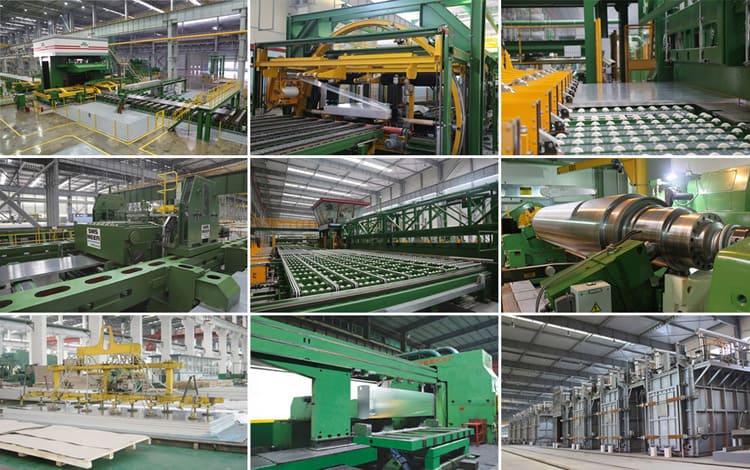
Casting and rolling process
Casting and rolling process: liquid metal, front box (liquid level control), casting and rolling machine (lubrication system, cooling water), shearing machine, coiling machine.
Cold rolling production process

Introduction to finishing production process
Aluminum alloy has the characteristics of low density, good mechanical properties, good processing performance, non-toxic, easy to recycle, excellent electrical conductivity, heat transfer and corrosion resistance, so it has a wide range of applications.
Aerospace: used to make aircraft skins, fuselage frames, girders, rotors, propellers, fuel tanks, wall panels and landing gear struts, as well as rocket forging rings, spacecraft wall panels, etc.
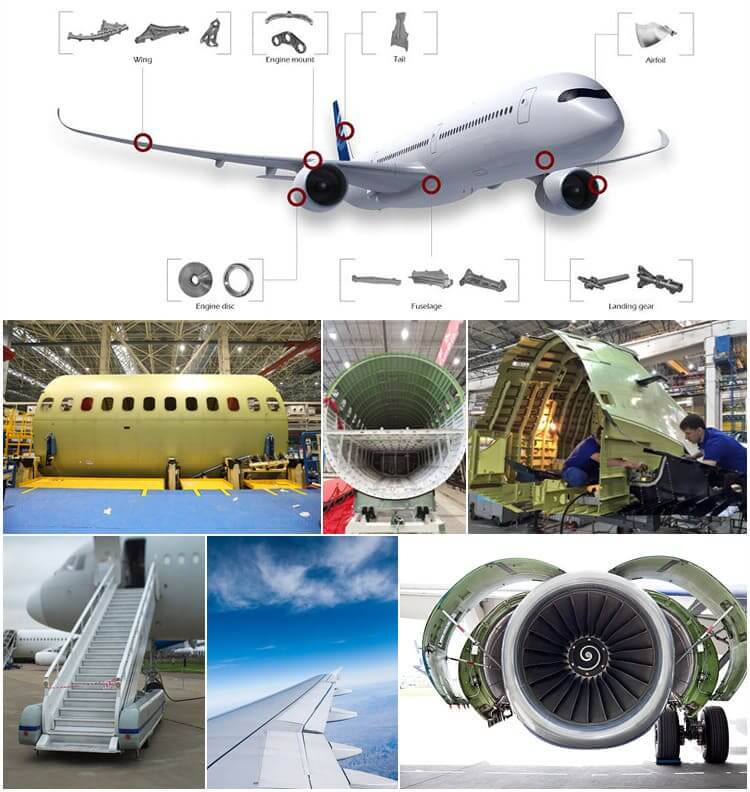
Aluminum alloy used for aerospace
Transportation: used for car body structure materials of automobiles, subway vehicles, railway passenger cars, high-speed passenger cars, doors and windows, shelves, automotive engine parts, air conditioners, radiators, body panels, wheels and ship materials.
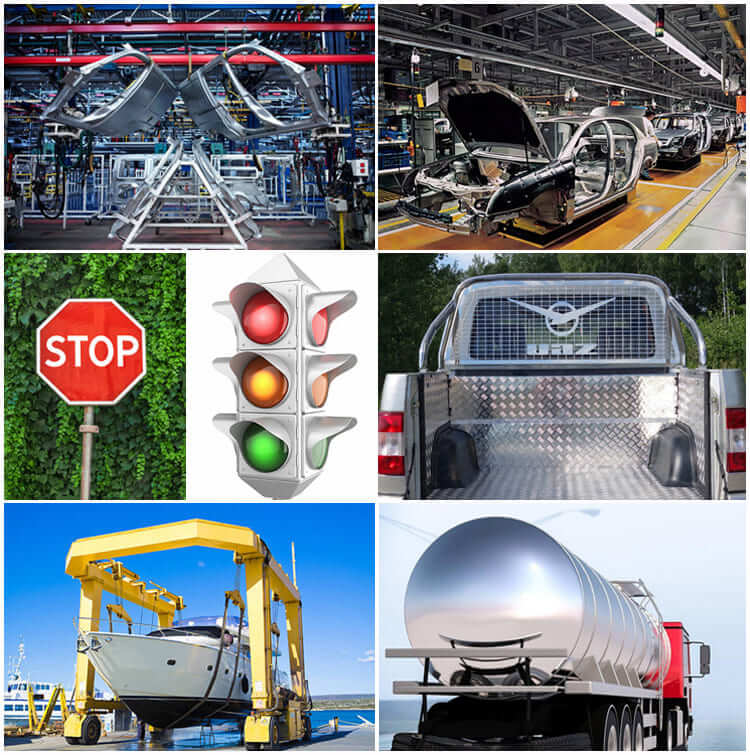
Traffic application
Packaging: All-aluminum pop cans are mainly used as metal packaging materials in the form of thin plates and foils, and are made into cans, lids, bottles, barrels, and packaging foils. Widely used in the packaging of beverages, food, cosmetics, medicines, cigarettes, industrial products, medicines, etc.
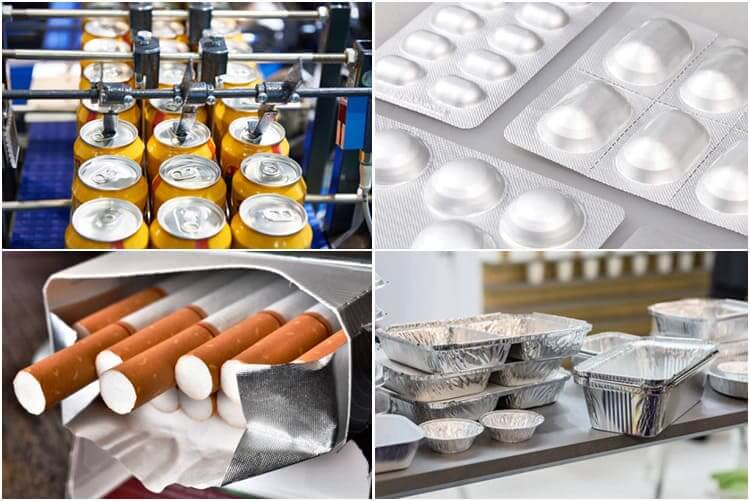
Packaging application
Printing: Mainly used to make PS plates, aluminum-based PS plates are a new type of material in the printing industry, used for automatic plate making and printing.

PS printing
Architectural decoration: aluminum alloy is widely used in building structures, doors and windows, suspended ceilings, decorative surfaces, etc. due to its good corrosion resistance, sufficient strength, excellent process performance and welding performance.
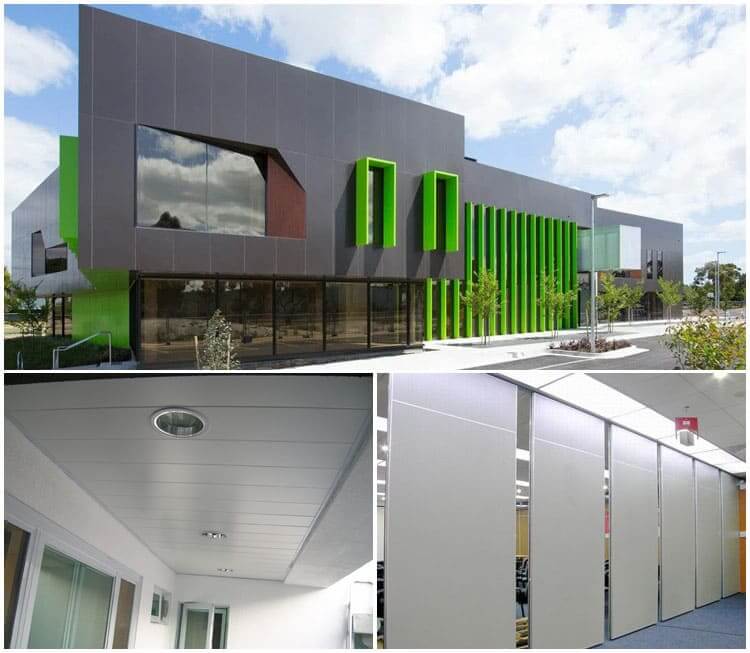
Aluminum alloy construction application
Electronic products: computers, mobile phones, refrigerator shells, radiators, etc.

Electronic product application
Kitchen supplies: aluminum pots, aluminum basins, rice cooker liners, household aluminum foil, etc.

Kitchen application
Packaging Of Aluminum Sheet/Coil
Every detail of packaging is where we pursue perfect service. Our packaging process as a whole is as follows:
Lamination: clear film, blue film, micro-mucosal, high-mucosal, laser cutting film (2 brands, Novacell and Polyphem);
Protection: paper corner protectors, anti-pressure pads;
drying: desiccant;
Tray: fumigated harmless wooden tray, reusable iron tray;
Packing: Tic-tac-toe steel belt, or PVC packing belt;
Material Quality: Completely free from defects such as white rust, oil spots, rolling marks, edge damage, bends, dents, holes, break lines, scratches, etc., no coil set.
Port: Qingdao or other ports in China.
Lead time: 15-45 days.

Aluminum sheet/plate packaging process
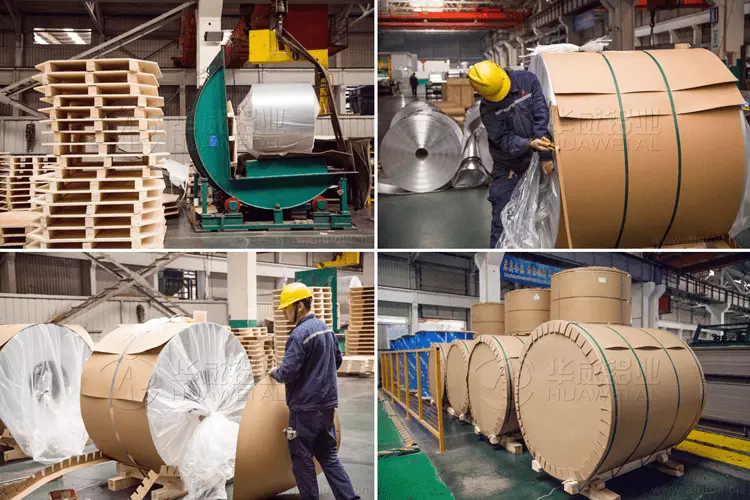
Aluminum coil packaging process
F: Are you a manufacturer or a trader?
Q: We are a manufacturer, our factory is at No.3 Weier Road, Industrial Zone, Gongyi, Henan, China.
F: What is the MOQ for ordering the product?
Q: Our MOQ is 5 tons, and some special products will have a minimum order quantity of 1 or 2 tons.
F: How long is your lead time?
Q: Generally our lead time is about 30 days.
F: Do your products have quality assurance?
Q: Yes, if there is a quality problem with our products, we will compensate the customer until they are satisfied.
Related Products
Latest Blogs
Aluminum foil vs tin foil
Aluminum foil and tin foil are two common metal sheet materials. They are similar in appearance, both have a silver-white metallic luster, and are often used in daily life to wrap food, perform baking or grilling and other cooking operations.
7075 t651 aluminum material properties
7075 aluminum alloy is a high-strength aluminum alloy. It belongs to the Al-Zn-Mg-Cu alloy series and is a representative product of the 7000 series aluminum alloy.
Physical and Chemical Properties of Aluminum and aluminum alloys
Although aluminum and aluminum alloys both use aluminum as the main synthetic element, they have great differences in certain physical and chemical properties.
The development history of aluminum and aluminum alloys
Aluminum is named after the Latin word "alumen", which means "bitter earth" or "alum". The name was first proposed by Swedish chemist Jons Jakob Berzelius around 1825 to describe the properties of this metal oxide.



